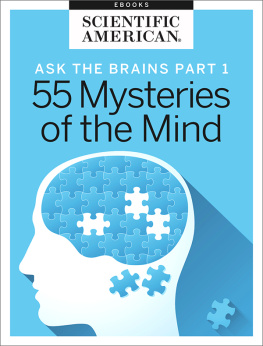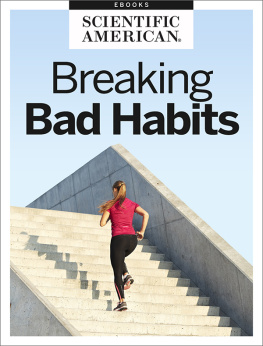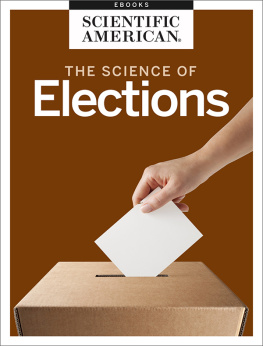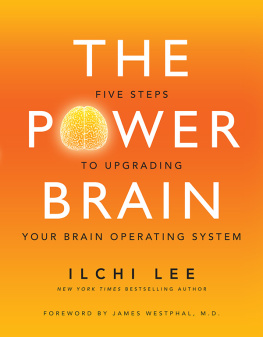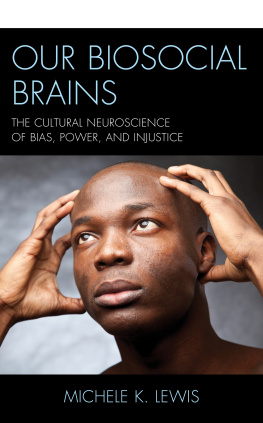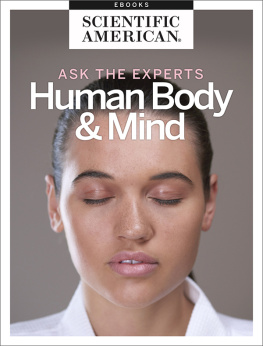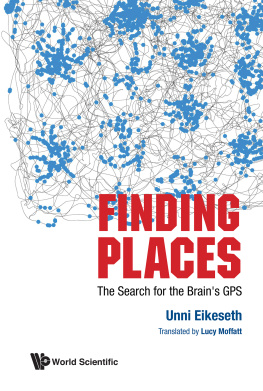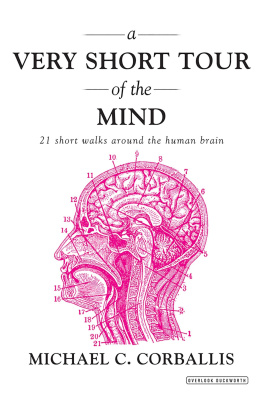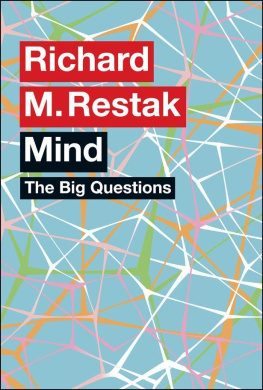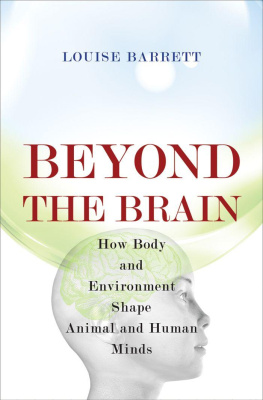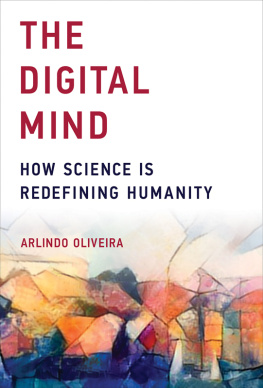Ask the Brains: Part 1
Experts Reveal 55 Mysteries of the Mind
From the Editors of Scientific American
Image: paci77/Getty Images
Letters to the Editor
Scientific American
One New York Plaza
Suite 4500
New York, NY 10004-1562
or editors@sciam.com
Copyright 2017 Scientific American, a division of Nature America, Inc.
Scientific American is a registered trademark of Nature America, Inc.
All rights reserved.
Published by Scientific American
www.scientificamerican.com
ISBN: 978-1-2501-2152-3


ASK THE BRAINS, PART 1
Experts Reveal 55 Mysteries of the Mind
From the Editors of Scientific American
Table of Contents
Introduction
by Karin Tucker
Section 1
1.1
by Claus C. Hilgetag & Helen Barbas
1.2
by Mark A. W. Andrews
1.3
by Robert O. Duncan
1.4
by Mark A. W. Andrews
1.5
by Charles Choi
1.6
By Alexander Fornito
1.7
by Mark A. W. Andrews
Section 2
2.1
by Richard J. Haier
2.2
by Roni Jacobson
2.3
by Barry Gordon
2.4
by Barry L. Beyerstein
2.5
by Daniel Willingham
2.6
by Barry Gordon
2.7
by Keise Izuma
2.8
by Andrew Newberg
2.9
by Keith E. Stanovich
2.10
by Steven Neuberg and Sophie Bushwick
2.11
by Susana Martinez-Conde
2.12
by Rosanna E. Guadagno
2.13
by Graham J. McDougall, Jr.
Section 3
3.1
by Daniel Willingham
3.2
by Daniel Willingham
3.3
by Mark A. W. Andrews
3.4
by Nikhil Swaminathan
3.5
by Kayt Sukel
3.6
by Robert Plomin
3.7
by Chris McManus
Section 4
4.1
by Michael Rugg
4.2
by Paul Reber
4.3
by Jeannine Stamatakis
4.4
by Paul Reber
4.5
by Dima Amso
4.6
by Robert O. Duncan
4.7
by Jamie Ward
4.8
by Manfred Hallschmid & Susanne Diekelmann
4.9
by Paul Reber
4.10
by Gordon H. Bower
4.11
by Barry Gordon
4.12
by Charles F. Zorumski
Section 5
5.1
by James M. Lampinen
5.2
by Paul Reber
5.3
by Edvard I. Moser
Section 6
6.1
by Jeannine Stamatakis
6.2
by Justin Rhodes
6.3
by David R. Jacobs
6.4
by Mark A. W. Andrews
Section 7
7.1
by John McDermott
7.2
by Andrea Halpern
7.3
by Larry Greenemeier
7.4
by Donald Wilson
7.5
by Tim Jacob
Section 8
8.1
by James M. Broadway & Brittiney Sandova
8.2
by Michael P. Kaschak
8.3
by Beatrice Alexandra Golomb
8.4
by Michael Corballis
Know Thyself
Thinking is difficult, thats why most people judge. C.G. Jung
Many of us have done it - giggled when someone falls down, forgotten the name of an acquaintance or believed in something despite scientific evidence to the contrary. But have you ever wondered why we do these things? For more than a decade, Scientific American MINDs long-running feature Ask the Brains has addressed questions like these from our readers on the quirks and quandaries of human behavior, psychology and neurology. Here in Ask the Brains, Part 1 weve compiled 55 of the best and most interesting inquiries about the human brain.
We begin with a look at the form and structure of the brain itself. Ever wonder why the outer surface of our brains has folds or why the left side of the brain controls the right and vice versa? In Section 1, our experts field questions regarding the brains physical workings.
Next are sections on Thinking, Ideas & Beliefs and Intelligence & Learning. Who hasnt asked (and hoped) whether its possible to use more of our brains or whether we can learn to think more rationally? Our experts weigh in. They also help identify how ideas and insights arise, including what internal and external environments best foster new ideas and how beliefs are created and adopted.
Sections 4 and 5 focus on the creation, recall and storage of memories and the phenomena of dj vu. In Section 4, instructor Jeanine Stamatakis, provides insight into the astonishing memory capacity of mega savant Kim Peek. Other selections cover the influence of age and alcohol use on memory. Later in Section 5, Professor Paul Reber explains what actually happens in the brain when we experience dj vu.
Sections 6 and 7 look at how exercise affects the brain and how our senses work to interpret the world around us. Why does exercising make us both feel and think better than when we are sedentary? Our experts discuss the psychological and cognitive benefits of exercise, and Professor Mark A. W. Andrews explains the perceived boost that music brings to your workout. In Section 7, we look at how our senses work and malfunction, including the nightmare scenario of being able to hear ones own eyeballs move. We conclude with a Miscellany section, a hodge-podge that covers a variety of topics including perception of time, the difficulty of communication without using hand gestures and ambidexterity.
So whether youre curious what brain freeze actually is, if intelligence is hereditary or when children start making long-term memories, weve enlisted professors, instructors and other experts to provide answers that are both accurate and understandable. But of course, these only scratch the surface of the workings and foibles of human behavior and psychology. For answers to questions on personality, emotions, dreams and more, keep an eye out for Ask the Brains, Part 2.
--Karin Tucker
Book Editor
SECTION 1
Form & Structure
Why Does the Outer Surface of the Brain Have Folds?
Neuroscientists Claus C. Hilgetag of Jacobs University Bremen in Germany and Helen Barbas of Boston University explain:
Perception, emotion, thought and all other forms of conscious experience arise from the cerebral cortex, the outermost layer of the brain. As animals evolved to use more of these high-level processes, they eventually needed more space for this layer of gray matter than the inside surface of the skull could provide. Folds maximize the surface area available for the cerebral cortex without increasing the size of the head.
Dogs, cats, apes, dolphins and humans have folded brains, whereas animals with smaller brains do not. The tissue sheet of the human cerebral cortex is about three times as large as the inside surface of the skull. Its folding pattern is far from random, howeververy unlike a crumpled sheet of paper. In the 19th century scientists proposed that simple mechanical principles might underlie the brains characteristic structure. They also postulated that the brains surface shape (morphology) and function were related. For decades, these ideas seemed nave next to emerging genetic theories. Recent studies, however, have given new support to the concept that mechanical factors play a key role in brain morphology and function.
Nerve fiber bundles are tense, like stretched elastic. Regions in the brain that are densely connected are pulled toward one another, producing outward bulges between themthe hills of the cortical landscape. Weakly connected regions drift apart, forming cortical valleys. The stretching and compression of brain tissue also have an effect on the architecture of the cortex and the shape of individual cells, most likely affecting brain function.

